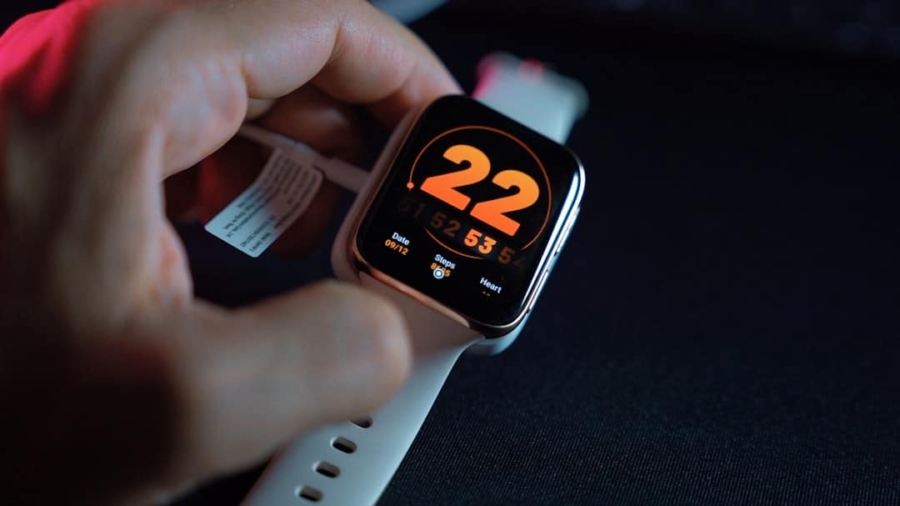Wearable fitness devices have revolutionized the way individuals approach health and wellness. These gadgets, which include smartwatches, fitness trackers, and heart rate monitors, have become ubiquitous in the fitness landscape. They offer users the ability to monitor their physical activity, track their workouts, and even analyze their sleep patterns.
The integration of technology into fitness has not only made it easier for people to set and achieve their health goals but has also fostered a culture of accountability and motivation. With the rise of mobile applications and cloud-based platforms, users can now access their data in real-time, allowing for a more personalized approach to fitness. The appeal of wearable fitness devices lies in their ability to provide immediate feedback.
For instance, a runner can receive alerts about their pace, distance, and heart rate while on the move, enabling them to adjust their performance in real-time. This instant feedback loop encourages users to push their limits and strive for improvement. Moreover, many devices come equipped with social features that allow users to share their achievements with friends or compete against others, further enhancing motivation.
As technology continues to evolve, the capabilities of these devices are expanding, making them an integral part of modern fitness regimens.
Key Takeaways
- Wearable fitness devices have become increasingly popular for tracking and monitoring fitness progress.
- Virtual competitions in the fitness world have seen a rise in popularity, allowing individuals to compete from anywhere.
- These devices track and monitor progress through various metrics such as heart rate, steps taken, and calories burned.
- Wearable fitness devices play a crucial role in virtual competitions by providing real-time data and performance tracking.
- Using wearable fitness devices in virtual competitions offers benefits such as motivation, accountability, and the ability to compete remotely.
The Rise of Virtual Competitions in the Fitness World
Democratizing Access to Competitive Fitness
This shift has opened up competitive fitness to people from diverse backgrounds and geographical locations, allowing them to engage in events that were previously limited to local communities or elite athletes.
The Rise of Virtual Events
Virtual competitions encompass a wide range of activities, including running marathons and cycling challenges, all facilitated through apps that track performance metrics. The COVID-19 pandemic accelerated the growth of virtual competitions as traditional events were canceled or postponed, prompting fitness enthusiasts to turn to online platforms to maintain their competitive spirit and connect with others.
A New Era for Fitness Engagement
Events like virtual marathons have gained immense popularity, where participants can run at their own pace and submit their times online.
As a result, virtual competitions have become a staple in the fitness world, appealing to both casual participants and serious athletes alike.
How Wearable Fitness Devices Track and Monitor Progress
Wearable fitness devices utilize a variety of sensors and technologies to track physical activity and monitor health metrics. Most commonly, these devices are equipped with accelerometers that measure movement and calculate steps taken throughout the day. Additionally, many advanced models include heart rate monitors that provide insights into cardiovascular performance during workouts.
Some devices even feature GPS capabilities, allowing users to track their routes and distances accurately while running or cycling. The data collected by these devices is often synced with mobile applications that provide users with detailed analytics about their performance over time. For example, a user might track their running pace over several weeks, identifying trends and areas for improvement.
Many devices also offer goal-setting features, enabling users to set specific targets for daily steps, calories burned, or workout frequency. This data-driven approach empowers individuals to take control of their fitness journeys by providing them with tangible evidence of their progress.
The Role of Wearable Fitness Devices in Virtual Competitions
In the context of virtual competitions, wearable fitness devices play a crucial role in ensuring accuracy and fairness. Participants rely on these devices to record their performance metrics accurately, which are then submitted to competition organizers for verification. This reliance on technology helps maintain the integrity of the competition by providing objective data that can be audited if necessary.
For instance, a virtual marathon may require participants to use a GPS-enabled device to ensure that they complete the full distance. Moreover, wearable fitness devices enhance the overall experience of virtual competitions by fostering community engagement.
This social aspect is particularly important in virtual settings where physical interaction is limited. By sharing achievements and encouraging one another, participants can cultivate a supportive environment that motivates them to perform at their best.
Benefits of Using Wearable Fitness Devices in Virtual Competitions
The integration of wearable fitness devices into virtual competitions offers numerous benefits for participants. One significant advantage is the ability to track performance metrics in real-time, allowing competitors to adjust their strategies on the fly. For example, a cyclist can monitor their heart rate during a race and decide whether to push harder or conserve energy based on their current state.
This level of insight can be pivotal in achieving personal bests or winning competitions. Additionally, wearable fitness devices often come with built-in features that enhance training regimens leading up to virtual events. Many devices offer guided workouts or training plans tailored to specific goals, such as preparing for a half-marathon or improving overall endurance.
These resources can help participants optimize their training schedules and ensure they are adequately prepared for competition day. Furthermore, the ability to analyze historical data allows users to identify patterns in their performance, enabling them to make informed decisions about future training adjustments.
Challenges and Limitations of Wearable Fitness Devices in Virtual Competitions
Technical Malfunctions and Inaccuracies
One of the primary concerns is the potential for technical malfunctions or inaccuracies in data recording. For instance, GPS signals can be unreliable in certain environments, leading to discrepancies in distance measurements during races. Such inaccuracies can affect not only individual performance but also overall competition results if not properly accounted for.
Accessibility of Technology
Another challenge is the accessibility of technology itself. While wearable fitness devices have become more affordable over time, there remains a segment of the population that may not have access to these tools due to financial constraints or lack of technological literacy. This disparity can create an uneven playing field in virtual competitions, where some participants may have advanced devices that provide more comprehensive data compared to others using basic models or none at all.
Ensuring Inclusivity and Equity
Addressing these challenges is essential for ensuring that virtual competitions remain inclusive and equitable. It is crucial to find solutions to mitigate the effects of technical malfunctions and inaccuracies, as well as to increase access to wearable fitness devices for all participants. By doing so, virtual competitions can continue to thrive and provide a level playing field for all.
Tips for Maximizing the Use of Wearable Fitness Devices in Virtual Competitions
To fully leverage the capabilities of wearable fitness devices during virtual competitions, participants should consider several strategies. First and foremost, familiarizing oneself with the device’s features is crucial. Understanding how to navigate settings, access performance metrics, and interpret data can significantly enhance the user experience.
Many manufacturers provide tutorials or user guides that can help users maximize their device’s potential. Additionally, setting realistic goals based on historical data can lead to more satisfying outcomes during competitions. Participants should analyze past performances recorded by their devices to identify achievable targets for upcoming events.
This approach not only fosters motivation but also helps individuals avoid setting themselves up for disappointment by aiming too high without proper preparation. Furthermore, engaging with online communities or forums dedicated to specific competitions can provide valuable insights and tips from fellow participants who may have experience with similar events.
The Future of Wearable Fitness Devices in Virtual Competitions
As technology continues to advance at a rapid pace, the future of wearable fitness devices in virtual competitions looks promising. Innovations such as improved sensor accuracy, longer battery life, and enhanced connectivity options are likely to enhance user experiences further. For instance, future devices may incorporate artificial intelligence algorithms that analyze performance data more comprehensively, offering personalized training recommendations based on individual progress.
Moreover, as virtual competitions become increasingly mainstream, we may see greater integration between wearable fitness devices and competitive platforms. This could lead to features such as live leaderboards that update in real-time based on participants’ performance metrics or even augmented reality experiences that allow competitors to visualize their progress against others in a more immersive way. The potential for collaboration between technology companies and fitness organizations could pave the way for entirely new formats of competition that blend physical activity with digital engagement.
In conclusion, wearable fitness devices have become indispensable tools in the realm of virtual competitions, offering users unprecedented insights into their performance while fostering community engagement and motivation. As technology evolves and more individuals embrace these innovations, the future holds exciting possibilities for how we approach fitness challenges in a digital world.
If you’re interested in exploring the latest technology trends, you may also want to check out this article on the best Android apps for 2023. This article highlights some of the top apps that can enhance your mobile experience and keep you connected on the go. Whether you’re looking for productivity tools, entertainment options, or fitness trackers, this list has something for everyone.
FAQs
What are wearable fitness devices?
Wearable fitness devices are electronic devices that are worn on the body to track and monitor fitness-related metrics such as steps taken, distance traveled, heart rate, and calories burned. These devices can include fitness trackers, smartwatches, and other wearable technology.
How do wearable fitness devices support virtual competitions?
Wearable fitness devices support virtual competitions by allowing participants to track their fitness activities and performance metrics in real-time. This data can be used to compete with others in virtual challenges, races, or fitness competitions, regardless of geographical location.
What types of virtual competitions can be supported by wearable fitness devices?
Wearable fitness devices can support a wide range of virtual competitions, including virtual races, step challenges, cycling challenges, and fitness challenges. These competitions can be organized by individuals, fitness groups, or companies to promote physical activity and healthy competition.
How do wearable fitness devices enhance the virtual competition experience?
Wearable fitness devices enhance the virtual competition experience by providing accurate and real-time data on participants’ performance. This allows for fair and transparent competition, as well as the ability to track progress and set personal fitness goals.
Can wearable fitness devices connect with virtual competition platforms?
Yes, many wearable fitness devices are designed to connect with virtual competition platforms and fitness apps. This allows participants to seamlessly sync their activity data and join virtual competitions, as well as compare their performance with others in the competition.



